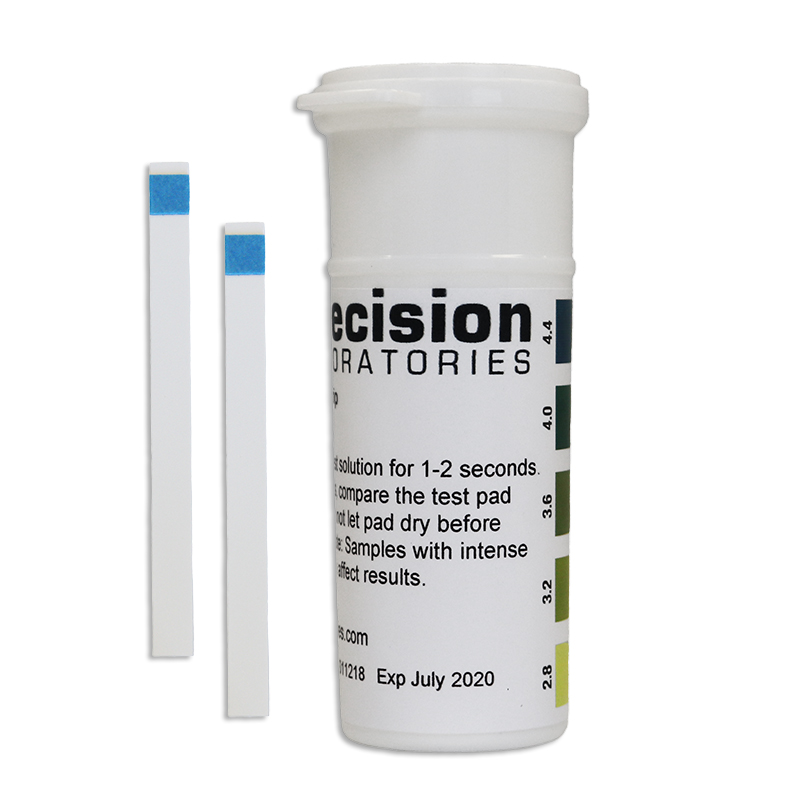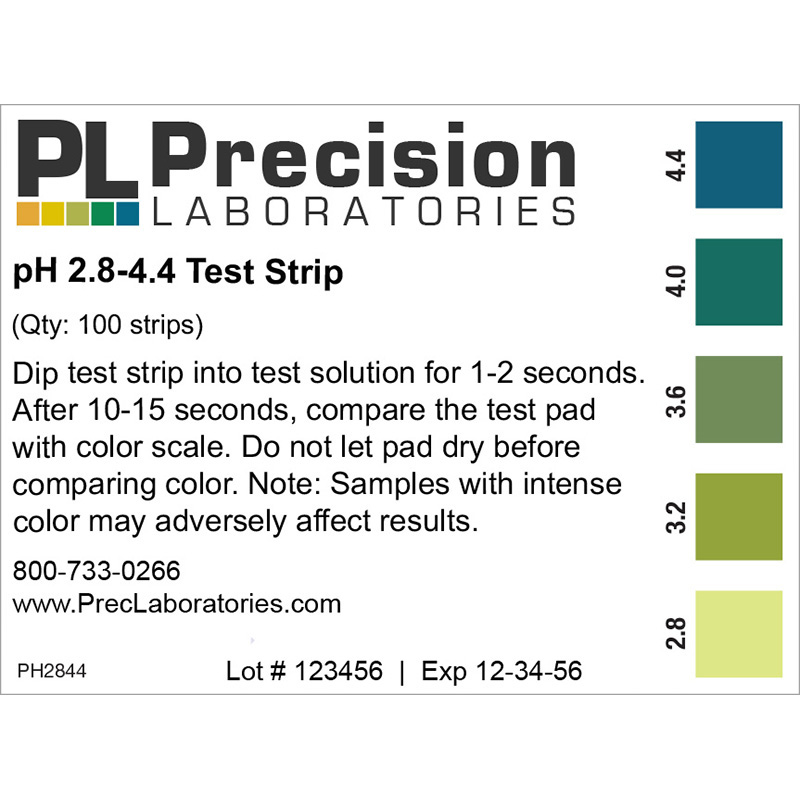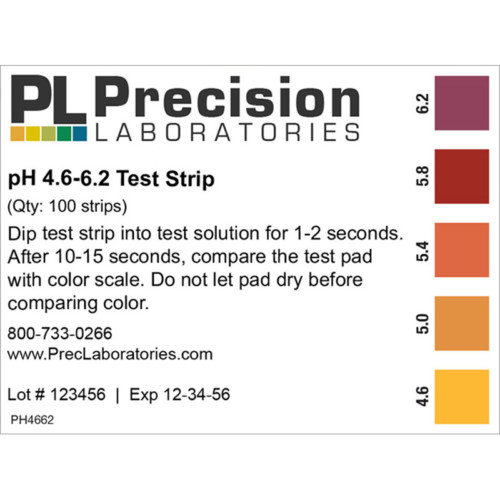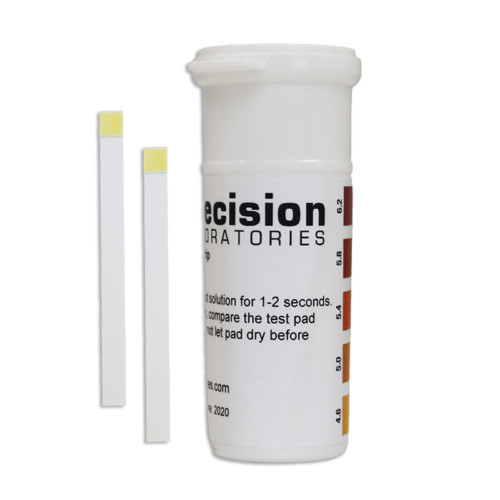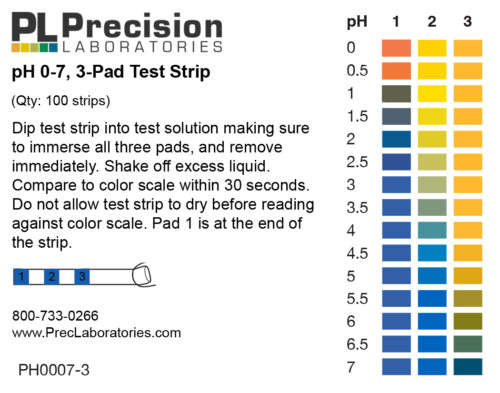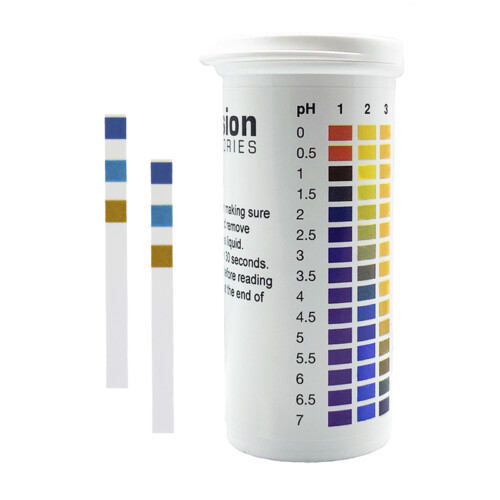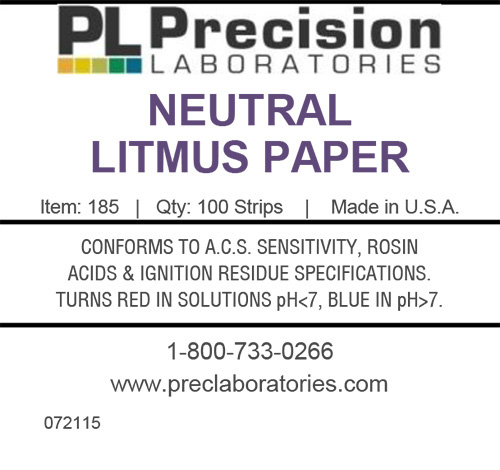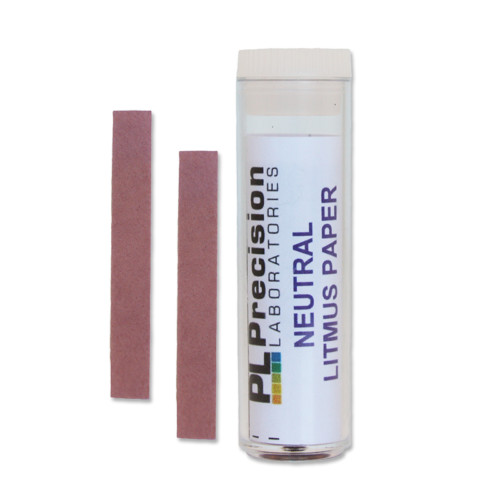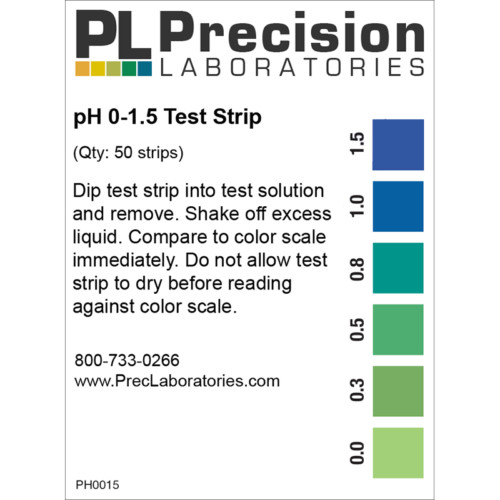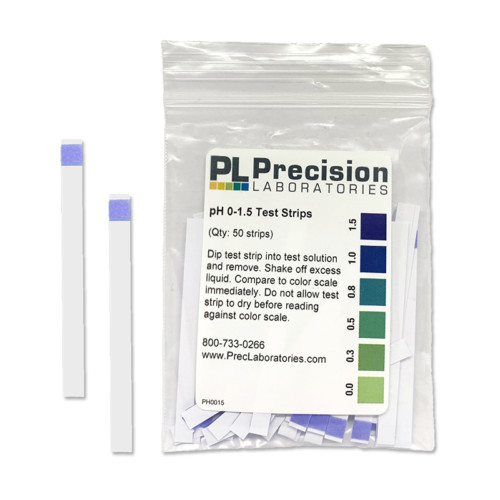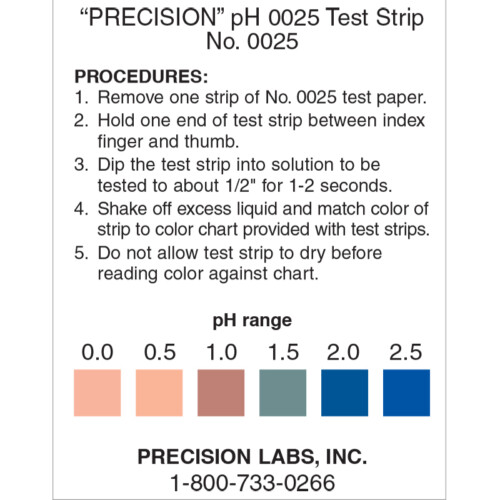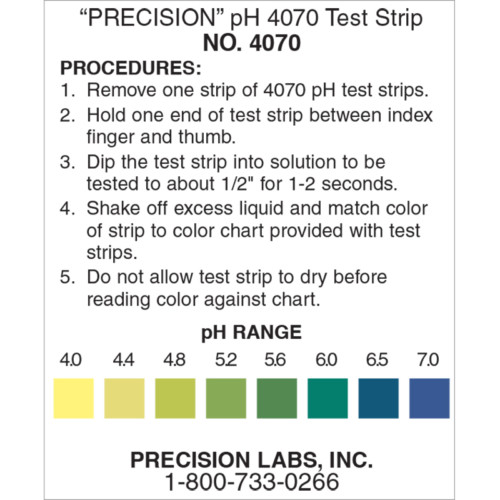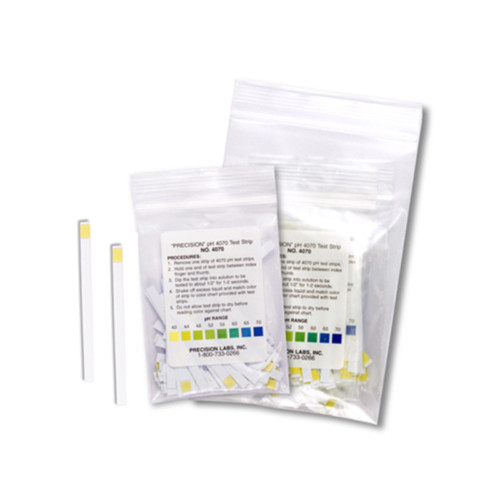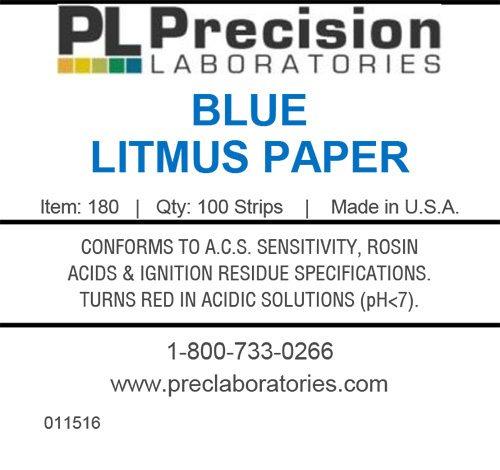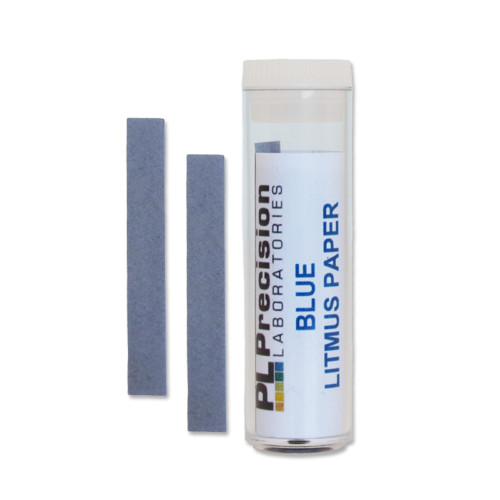Wine pH test strips are used to test the pH of the juice prior to fermentation, but can also be used to test the pH of kombucha tea.
Wine pH Test Strips 2.8-4.4
Wine pH Test Strips 2.8-4.4
- Remove one test strip from the vial.
- Dip the test pad into the solution being tested for 1-2 seconds.
- Remove the test strip and compare against the color chart within 10-15 seconds. Do not let the test pad dry before reading against the color chart.
Note: Samples with intense color may adversely affect results. To reduce the color effect on the test strip when testing red wine, use activated carbon (like that used in aquarium filters) to help take the color out of the solution sample. This method doesn’t appear to affect the pH of the solution. The strip may also be tested for efficacy by dipping it into a solution of one cup of water and a capful of vinegar.

Disclaimer: Precision Laboratories products are not approved for use as medical devices. Products and product information is for informational purposes only and not intended for use to diagnose, treat, cure or prevent any medical condition. Consult a medical doctor when needed.
KS2844; KS2844/100; KS2844/50; PH2844; PH2844-1V-100
Product Specs
| SKU 1: | PH2844-1V-100 |
|---|---|
| Strip Quantity: | 100 strips |
| Vial Dimensions: | 1.375″ (D) x 3.25″ (H) [35mm (D) x 83mm (H)] |
| Strip Dimensions: | 2.5" (L) x .1875" (W) [64mm (L) x 5mm (W)] |
| Weight: | 0.05 lbs [25.7 g] (100-strip vial) |
| Shelf-Life: | 2 Years |
| Label: | Customizable water-resistant label |
Product Documentation
SDS
Does temperature affect the pH test strips?
Our pH Color charts were developed using NIST-traceable pH buffers at 25°C. Colorimetric pH test strips do not offer “temperature compensation.” Care should be used when comparing results using test strips to those obtained with a temperature compensated pH meter. It is well established that the “true pH” of a solution will be influenced by temperature. The extent of the effect is specific to the solution being tested. It is good practice to record the temperature of the solution when expressing results of pH testing. In the case of test strips, since they do not compensate for temperature, it is recommended that the sample being tested be brought to room temperature first.
When I test the pH of red wine, it stains the test strip. How can I avoid this?
It is not a good idea to dilute the sample with water. While this helps to avoid the color stain, dilution of the hydrogen ion concentration will change the pH.
A better suggestion for measuring pH might be to use activated carbon (like that used in aquarium filters) to help take the color out of solution sample. This method doesn’t appear to affect the pH of the solution.
What pH test strips can I use to test kombucha tea?
Our Wine pH test strips, measuring from 2.8-4.4 work great for testing kombucha tea as well.
What test strips can be used to monitor pH during fermentation of wine?
Prior to, and during the process of fermentation, a measure of the pH of the solution is quite important. The correct pH must be established initially, and should be monitored throughout the process in order to facilitate the complete breakdown of the initial carbohydrates to alcohol. This measure of pH may be accomplished with the Universal pH test paper. In addition, the pH 1-14 test strips can be used to test the acidity (pH) of the juice/must/beer prior to and during the process of fermentation. For an initial measure of the pH of juice, a narrow range measure for wine production can be obtained using the pH 2.8-4.4 test strips.
Can I use pH test strips in non-buffered or low-buffered aqueous solutions?
Currently, our pH test strips are designed for testing buffered solutions, and the calibrations (color charts) are made on buffers against a pH-meter measurement. For non- or low-buffered solutions, these strips are not suitable. For this purpose, there are special pH test pads designed for low-ionic and low-buffered waters, such as water in aquariums or pools. Please see our Aquarium and Pool test strips.


